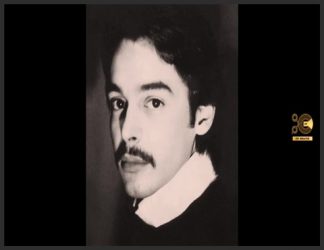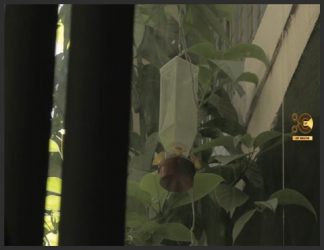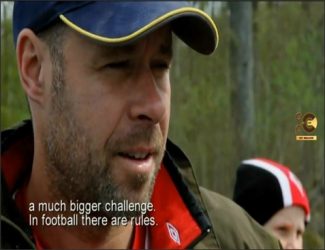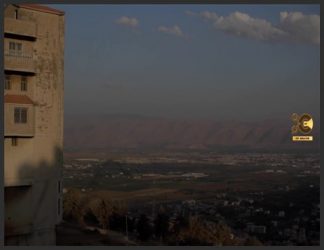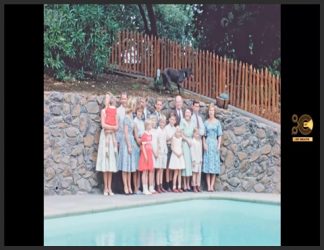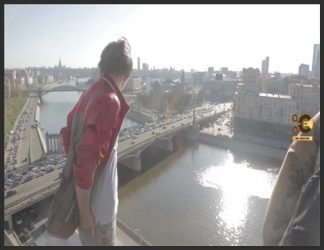You must need to login..!
توضیح
مستند کوتاه خارجی David Hurn Living in a World of Images
برای دانلود رایگان مستند کوتاه خارجی David Hurn Living in a World of Images با کیفیت 720p از پلیر سایت یا لینک زیر استفاده کنین
لینک دانلود link download
ژانر: کوتاه , مستند , بیوگرافی
امتیاز :
سال ساخت : 2018
مدت پخش : 07:08
زبان فیلم : انگلیسی
ساخت کشور انگلیس
کارگردان:
بازیگران:
دیوید هارن برای دهه ها چهره مهمی در جامعه عکاسی انگلیس (و بین المللی) بوده است. در کنار یک حرفه موفق و منتشر شده به عنوان یک عکاس ، هورن همچنین دانشکده مشهور عکاسی مستند را در نیوپورت ، ولز راه اندازی کرد. در سال 1989 ، او برنامه را ترک کرد تا به کار خودش برگردد.
LensCulture خوشحال است که او برای عضویت در هیئت داوران مراسم اهدای جوایز عکاسی مگنوم 2017 ابراز خوشحالی کرده است. ما با هارن به طور طولانی از طریق تلفن صحبت کردیم تا در مورد حرفه او و خرد جمع شده از شش دهه ساخت عکس بیشتر بدانیم. برای کشف داستان الهام بخش و توصیه های هارن برای عکاسان جوان به ادامه مطلب بروید –
LC: من خوانده ام که شما با گرفتن عکسهای یک عکاس بزرگ مگنوم ، که چشمان شما را به جهان بزرگتر باز می کند ، الهام گرفته اید که یک دوربین را بردارید. امروز ، ما غرق در تصاویر هستیم و (به ظاهر) به هر دانشی که می خواهیم دسترسی داریم. آیا فکر می کنید خبر نگاری هنوز هم همان قدرت جادویی را دارد که می تواند جهان های مختلفی را که قبلاً داشته آشکار کند؟
DH: امیدوارم که جادو نرفته باشد! من هنوز دقیقاً به همان روش عکاسی می کنم ، با همان اعتقاداتی که هنگام شروع کار داشتم کار می کردم. اگر همه اینها تغییر کند ، اتلاف باورنکردنی 60 سال از زندگی من بود …
من فکر می کنم درک زمینه ای که به واسطه آن به عکاسی آمدم مهم است. وقتی بزرگ شدم ، نارساخوان بودم – اما در آن زمان چنین واژه ای وجود نداشت. این بدان معنی بود که من در مدرسه ضعیف عمل کردم و اولین آرزوهایم – باستان شناسی یا دامپزشکی بودن – به روی من بسته شد. در آن زمان در انگلیس ، خدمت اجباری نظامی وجود داشت. بنابراین من 18 ماه به ارتش رفتم. عمدتا به دلیل مهارت در ورزش ، من به آکادمی نظامی سلطنتی Sandhurst [مرکز آموزش افسران ارتش انگلیس] دعوت شدم. یادم می آید که هنگام ورود ، متوجه شدم که بالای ورودی تابلویی وجود دارد که روی آن چیزی شبیه این بود: “اینجا وارد شوید و یک افسر و یک آقا باشید.” به عنوان کسی که فاقد صلاحیت است ، این ایده بدی به نظر نمی رسد.
قبل از اینکه (و در ابتدا در حالی که) در ارتش بودم ، فکر نمی کردم که یک عکاس شوم. حتی هرگز به عنوان یک حرفه بالقوه وارد ذهن من نشده است. یک روز ، در سالن آشفته افسران ، یک نسخه از عکس پست را که در آن زمان یک مجله بریتانیایی بسیار خوب بود ، برداشتم. من هنوز تاریخ آن را به یاد دارم: 12 فوریه 1955. داشتم آن را نگاه می کردم و به تصویری برخوردم – آنقدر با زور به من ضربه زد و بلافاصله شروع به گریه کردم. گریه چیزی نیست که به طور معمول در سالن آشفته افسران در Sandhurst انجام شود. در این عکس یک افسر ارتش روسیه در حال خرید کلاه برای همسرش در یک فروشگاه بزرگ مسکو بود.
David Hurn has been an important figure in the British (and international) photographic community for decades. Alongside a successful and widely-published career as a photographer, Hurn also set up the highly renowned School of Documentary Photography in Newport, Wales. In 1989, he left the program to return to his own work.
LensCulture is delighted that he agreed to be a member of the jury for the Magnum Photography Awards 2017. We spoke with Hurn at length over the phone to learn more about his career and his accumulated wisdom from six decades of making photographs. Read on to discover Hurn’s inspiring story and advice for young photographers—
LC: I’ve read that you were inspired to pick up a camera by the photographs of a great Magnum photographer, which opened your eyes to the larger world. Today, we are flooded with images and (seemingly) have access to any knowledge we desire. Do you think photojournalism still holds the same magical power to reveal different worlds that it once had?
DH: I do hope the magic hasn’t gone! I still shoot exactly the same way, operating with the same beliefs that I did when I started. It would have been an incredible waste of 60 years of my life if all of that changed…
I think it’s important to understand the context by which I came to photography. Growing up, I was dyslexic—but there was no such word back then. This meant I did poorly in school and my first dreams—to be an archaeologist or veterinarian—were closed off to me. In the UK at that time, there was compulsory military service. So I went off to the army for 18 months. Mainly because of my prowess at sport, I was invited to the Royal Military Academy Sandhurst [the British Army’s officer training center]. I remember, on arrival, noticing that there was a sign over the entrance which said something like, “Enter here and be an officer and a gentleman.” As someone with no qualifications, this seemed like not such a bad idea.
Before (and initially while) I was in the army, I had no thought of becoming a photographer. It never even entered my head as a potential profession. One day, in the officers’ mess hall, I picked up a copy of the Picture Post, a really fine British magazine at the time. I still remember the date: February 12, 1955. I was looking through it and came across a picture—it struck me so forcefully and so immediately, I began to cry. Crying is not something that is normally practiced in the officers’ mess hall at Sandhurst. The photograph featured a Russian army officer buying his wife a hat in a Moscow department store.




